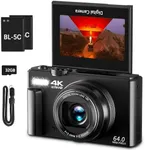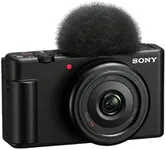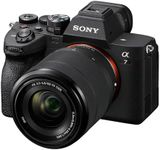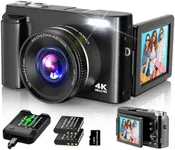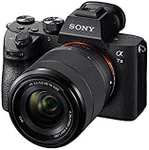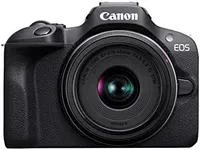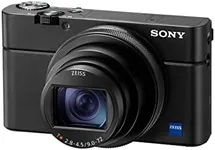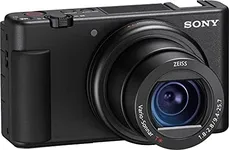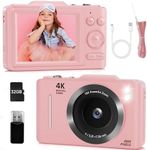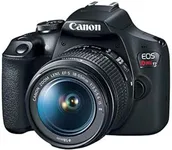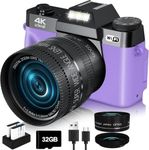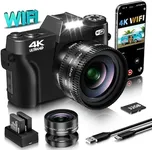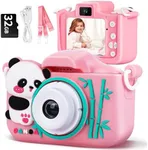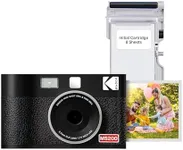Buying Guide for the Best Digital Cinematography Cameras
Choosing the right digital cinematography camera can be a daunting task, but understanding the key specifications can help you make an informed decision. The right camera for you will depend on your specific needs, such as the type of projects you work on, your shooting style, and the environments in which you film. Here are some key specs to consider when selecting a digital cinematography camera and how to navigate them to find the best fit for you.Sensor SizeThe sensor size of a camera determines the field of view and depth of field. Larger sensors, like full-frame or Super 35, offer a wider field of view and shallower depth of field, which can create a more cinematic look. Smaller sensors, like Micro Four Thirds, can be more compact and affordable but may not provide the same level of image quality. Choose a sensor size based on the type of projects you work on and the look you want to achieve.
ResolutionResolution refers to the number of pixels that make up the image. Higher resolutions, such as 4K or 8K, provide more detail and allow for greater flexibility in post-production, such as cropping or stabilizing footage. However, higher resolution files are larger and require more storage and processing power. If you need high-quality footage for professional projects, opt for higher resolutions. For smaller projects or online content, lower resolutions like 1080p may suffice.
Dynamic RangeDynamic range is the camera's ability to capture details in both the brightest and darkest parts of an image. A higher dynamic range allows for more detail in challenging lighting conditions and greater flexibility in post-production. Cameras with a wide dynamic range are ideal for shooting in varied lighting environments or for projects that require a high level of detail. If you often shoot in controlled lighting, a lower dynamic range may be acceptable.
Frame RatesFrame rates determine how many frames per second (fps) the camera can capture. Standard frame rates like 24fps or 30fps are suitable for most cinematic projects, while higher frame rates like 60fps or 120fps are used for slow-motion effects. Choose a camera with frame rates that match your project's needs. If you plan to shoot a lot of action or slow-motion scenes, look for cameras with higher frame rate capabilities.
Codec and BitrateThe codec and bitrate affect the quality and size of the recorded video files. Higher bitrates and more efficient codecs result in better image quality but larger file sizes. Common codecs include ProRes, DNxHD, and H.264. Choose a codec and bitrate that balance quality and file size based on your project's requirements and your post-production workflow.
Low Light PerformanceLow light performance is crucial for shooting in dimly lit environments. Cameras with larger sensors and higher ISO capabilities perform better in low light, producing cleaner images with less noise. If you frequently shoot in low light conditions, prioritize cameras with good low light performance. For well-lit environments, this spec may be less critical.
Lens CompatibilityLens compatibility determines the range of lenses you can use with the camera. Some cameras have interchangeable lens mounts, allowing you to use a variety of lenses, while others have fixed lenses. Consider the types of lenses you need for your projects and ensure the camera you choose is compatible with them. Interchangeable lens systems offer more flexibility and creative options.
Ergonomics and Build QualityErgonomics and build quality affect how comfortable and durable the camera is during use. Cameras with good ergonomics are easier to handle and operate, especially during long shoots. Build quality is important for durability, particularly if you shoot in challenging environments. Choose a camera that feels comfortable to use and is built to withstand the conditions you typically shoot in.
Audio CapabilitiesAudio capabilities are important if you plan to record sound directly with the camera. Look for cameras with good built-in microphones, audio inputs for external microphones, and manual audio controls. High-quality audio is crucial for professional projects, so ensure the camera meets your audio recording needs.
